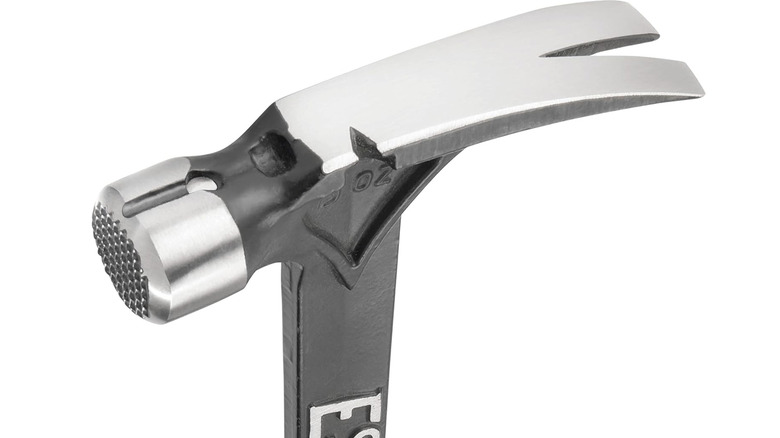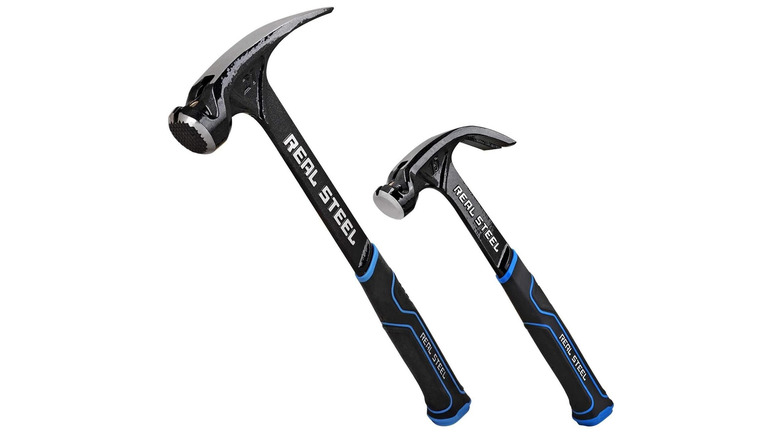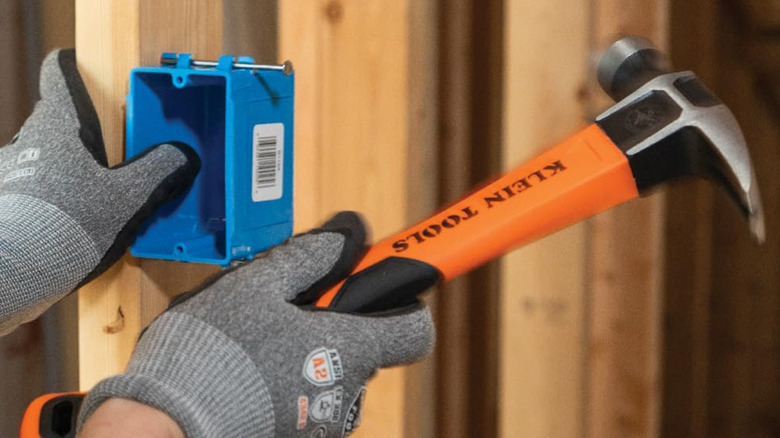Why Do Some Hammers Have Waffle Heads? Here's What They're For
We may receive a commission on purchases made from links.
To the untrained eye, all carpentry hammers can look alike. However, take a closer look and you'll notice that not all hammers are identical. For example, there are differences between framing hammers and claw hammers. But there are also differences in how the hammerheads are designed. Some have a smooth and polished surface, while others have a patterned "waffle-like" appearance. The latter is unsurprisingly known as a "waffle-head" hammer, although it's also commonly called a milled-face hammer. This textured face is more than just an aesthetic addition, it actually serves a practical and clever function. The specially textured striking face with its raised grid pattern is designed to help reduce "slippage" when striking nails. This is useful when striking any nail, but is particularly so when working with tougher or slippery materials, such as wet framing lumber, treated timber, or roofing shingles. By increasing friction between the hammer face and the nail head, the waffle pattern greatly reduces the chance of glancing blows or missed hits, allowing carpenters to work more quickly and safely.
But it isn't always the best option for every job. So, let's cut the waffle and have a look at waffle-head hammers, what they're used for, and when it's best to opt for their smooth-headed counterparts.
Waffle-head hammers: what they're used for
The waffle head pattern featured on certain hammers is not just a pretty face, it also makes them ideal for certain carpentry jobs. The fact that they are often referred to as framing hammers is a major clue. For the most part, these hammers are used for tough, slippery, repetitive, and heavy-duty jobs, such as framing. As previously noted, the major advantage of this type of hammer is its non-slip characteristics. This helps to keep workers driving in nails faster with fewer errors and less sore thumbs.
Waffle-head hammers are particularly popular among professional framers, roofers, and builders working in outdoor or challenging environments. They're also useful for amateurs who might not be quite as adept with a hammer. Their design helps ensure rapid construction of wooden frames, decking, fences, and even large-scale projects like residential housing developments. For both professionals and DIYers looking for speed, accuracy, and safety, waffle-head hammers like the Real Steel forged milled face hammer are often the preferred choice. However, while the waffle-head is undoubtedly a useful addition to any Snap-on toolbox, this type of hammer is not the right choice for every type of job.
What waffle-head hammers shouldn't be used for
While the waffle-head hammer has distinct advantages when it comes to heavier carpentry work, the milled face can become a disadvantage in other situations. Put simply, having a waffle pattern on frames or roofing panels isn't important as such work will be covered over. However, delicate framing work or any other job where the final finish is important are not suited to such hammers, as the waffle pattern will easily mark and dimple the surface of any delicate job. This is why the smooth head hammer is usually preferred for finishing carpentry, furniture making, or any woodworking project where visible surfaces don't want to end up looking like they should be smothered in syrup.
Hammers like the Klein Tools straight-claw, smooth head hammer, help to ensure that surfaces remain unmarked — or at least undimpled — avoiding unnecessary follow-on touch-ups or full-blown repairs. While the waffle-head hammer will always be one for the rough and tumble jobs, there should always be room for their "smooth operating" brethren in every toolkit. Finally, whatever type of hammer you opt for, it's always worth investing in quality hammers from companies with reputations as being among the best hand tool brands.


